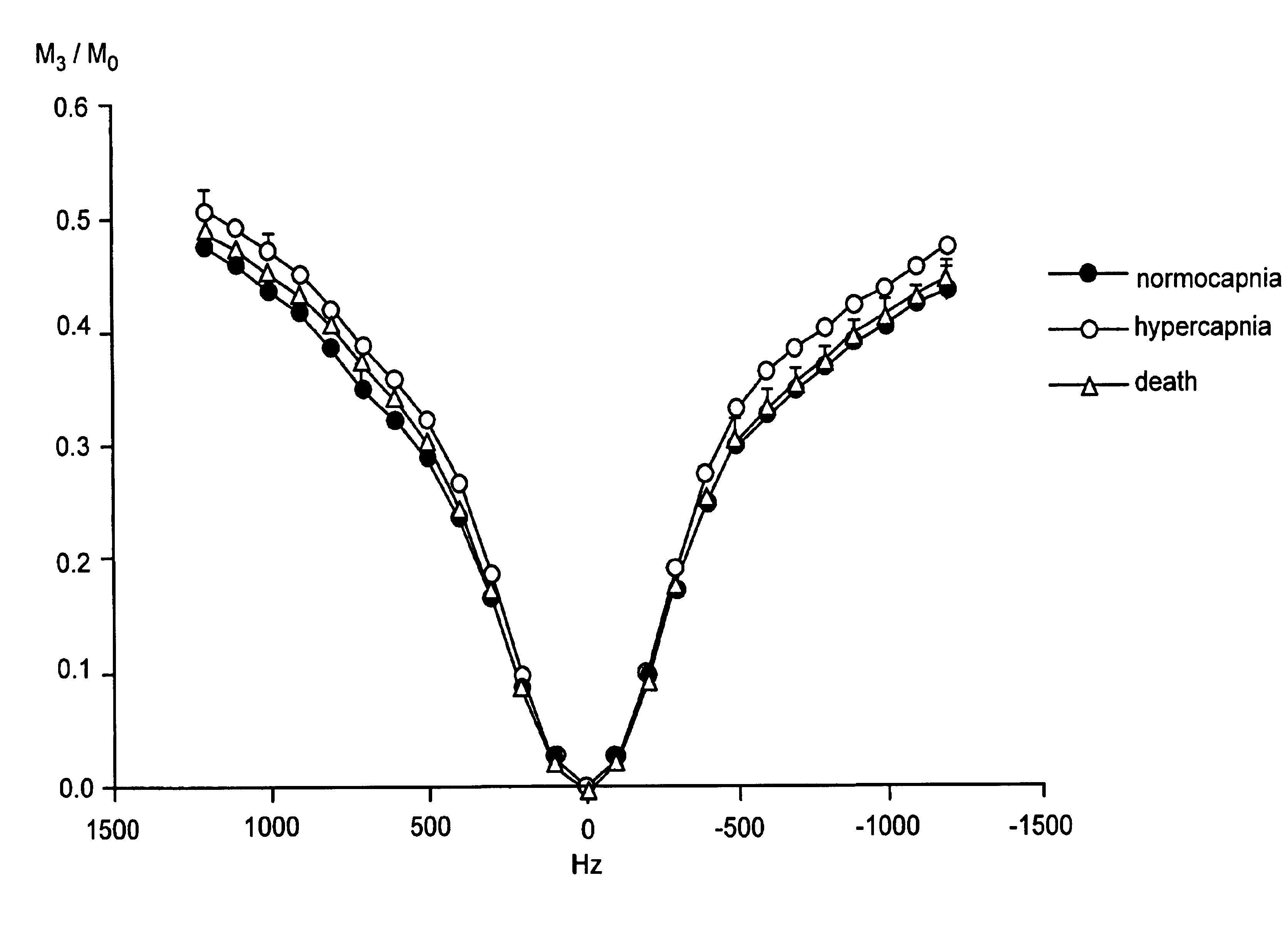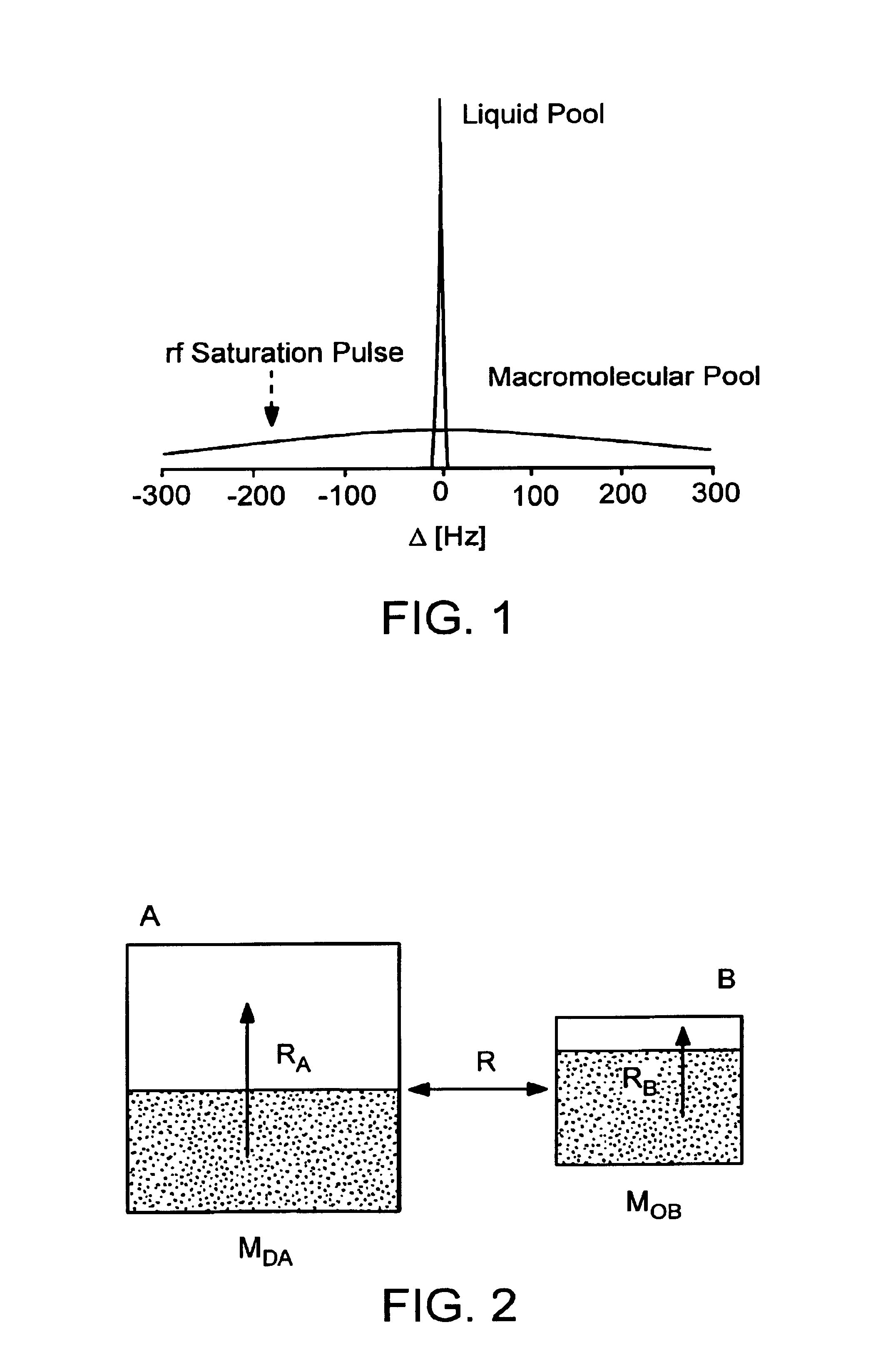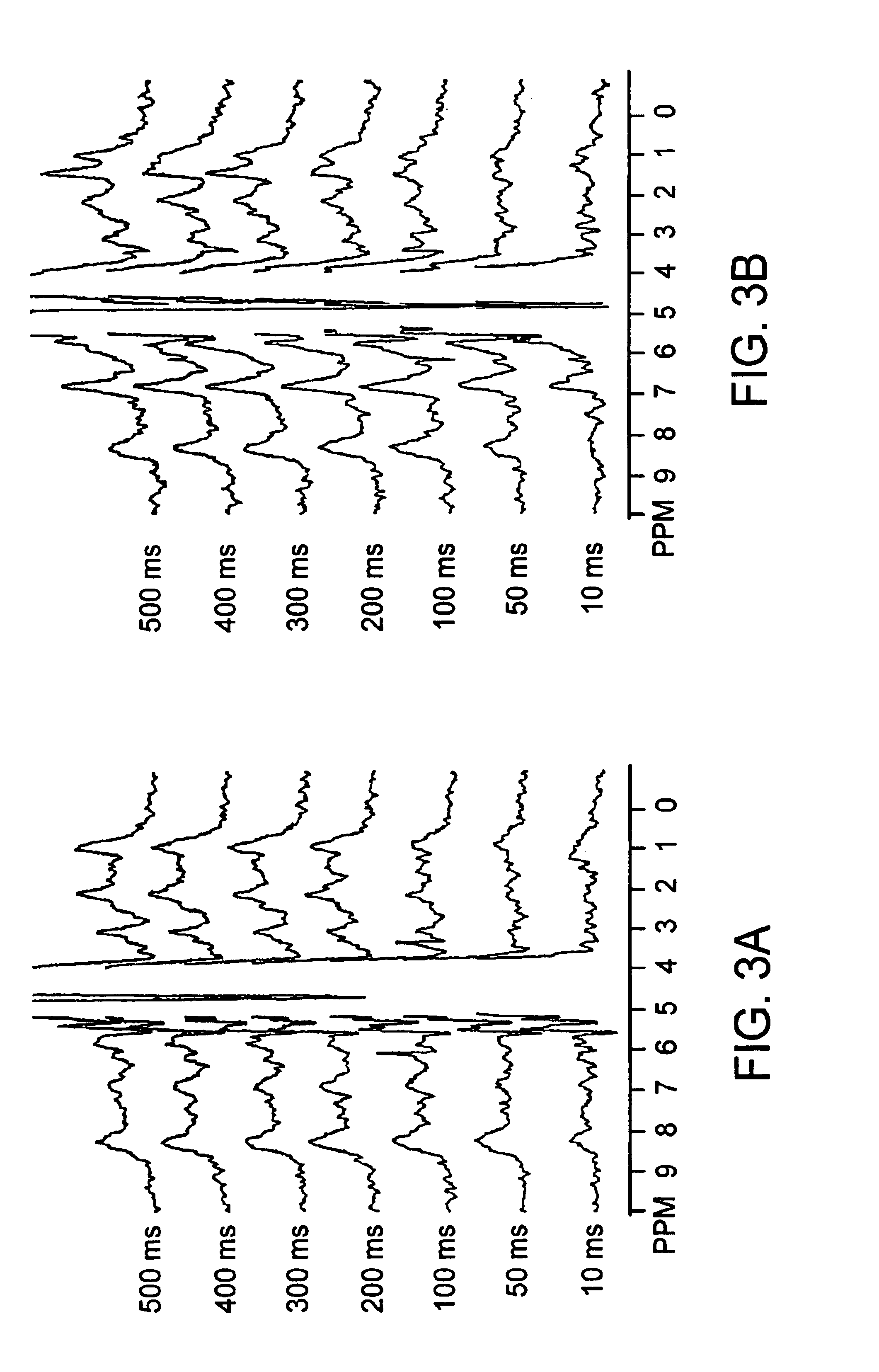Magnetic resonance method for assesing amide proton transfer effects between amide protons of endogenous mobile proteins and peptides and tissue water in situ and its use for imaging ph and mobile protein/peptide content
a technology of endogenous mobile proteins and amide protons, which is applied in the field of magnetic resonance imaging apparatus and methods for magnetic resonance imaging, can solve the problems of difficult to determine the history of specific ms lesions, unobservable lesions, and presently difficult to assess the viability of ischemic penumbra
- Summary
- Abstract
- Description
- Claims
- Application Information
AI Technical Summary
Benefits of technology
Problems solved by technology
Method used
Image
Examples
example 1
[0067]An in situ rat brain spectroscopy experiment was performed in which the opposite of a typical MT experiment was done. Namely, the water magnetization was selectively labeled and its transfer properties monitored as a function of time after labeling (mixing time tm). In such water exchange (WEX) experiments, the amide protons of proteins and peptides (6-10 ppm) and the aliphatic signals (0-3.5 ppm) from mobile macromolecules (proteins, larger peptides, some lipids) are visible, while those of smaller molecules, such as brain metabolites, are not. On the other hand, the solid-like spectrum of importance in conventional magnetization transfer (MT) imaging experiments is too broad to be detected (120-200 kHz). This experiment illustrates the difference between the properties of protons of mobile marcomolecules versus solid-like macromolecules and small metabolites.
[0068]Referring to FIGS. 3A,B there is shown normocapnic (3A) and postmortem (3B) water exchange (WEX) spectra for rat...
example 2
[0089]Referring to FIG. 7 there is shown a water exchange spectra (WEX spectra) for perfused RIF-1 cancer cells as a function of magnetization transfer time Tm. The illustrated WEX spectra (256 scans, 9.4T, sweep width 5000Hz, TE =8 ms, TR =2s) includes 5 curves (curves A-E) illustrating the WEX spectra for different magnetization transfer times. For purposes of comparisbn, FIG. 7 also includes a normal water suppressed spectrum (64 scans); curve F. Calculations based on signal to noise ratio (including a correction for the number of scans) show that the intensity of the amide resonance around 8.3 ppm at Tm =502.3 is about 75% of that in the reference spectrum. The chemical shifts and intensities for certain of the peaks between about 0.5 ppm to about 3.5 ppm, have striking resemblance with mixed protein spectra assigned to brain literature. The large resonance at 8.3 ppm is attributed to the protein peptide amide proton groups.
[0090]Referring now to FIG. 8 there is shown a graph of...
example 3
[0094]This example illustrates a specific modality in the clinical MRI examination of cancers. Referring now to FIGS. 11 A-C there are shown various graphs illustrating MT spectra, MTRasym spectra, and ΔPTR spectra for a 9L rat brain tumor and collateral region. Similar to the in vivo / postmortem system and ischemic / contralateral system, the tumor / contralateral imaging signal intensities are substantially reduced due to the effects of direct water saturation and conventional MT. However, it is surprising that the MTRasym curves in the tumor / contralateral case show something quite different, namely an increase in the tumor MTRasym spectra over a range of offsets between 2-5 ppm. Another different point based on these two tumor-implanted animals (6 measurements) is that there is a positive magnitude of ΔPTR at this offset range, and the maximum change in the tumor MTRasym spectra was found to be at an offset of 2.5-3 ppm. This is attributed to high pHi, high labile amide proton content...
PUM
| Property | Measurement | Unit |
|---|---|---|
| Fraction | aaaaa | aaaaa |
| Concentration | aaaaa | aaaaa |
| Ratio | aaaaa | aaaaa |
Abstract
Description
Claims
Application Information
 Login to View More
Login to View More - R&D
- Intellectual Property
- Life Sciences
- Materials
- Tech Scout
- Unparalleled Data Quality
- Higher Quality Content
- 60% Fewer Hallucinations
Browse by: Latest US Patents, China's latest patents, Technical Efficacy Thesaurus, Application Domain, Technology Topic, Popular Technical Reports.
© 2025 PatSnap. All rights reserved.Legal|Privacy policy|Modern Slavery Act Transparency Statement|Sitemap|About US| Contact US: help@patsnap.com



